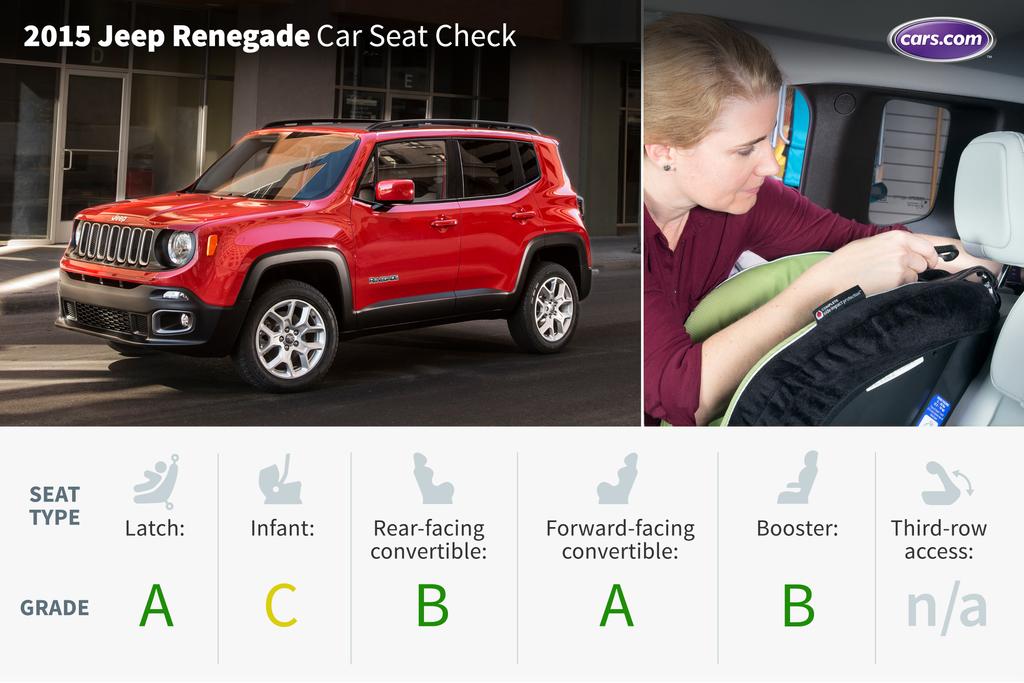
It might be pint-sized, but the 2015 Jeep Renegade can handle some aspects of family duty and child-safety seats. It excels when it comes to fitting forward-facing car seats, but rear-facing seats proved to be a challenge for this subcompact SUV. We tested the Renegade Limited trim with leather seats; it seats five passengers.
How many car seats fit in the second row? Two
What We Like
- The Renegade has two sets of lower Latch anchors in the outboard seats; we found them easy to use. There are three tether anchors on the rear seatbacks near the cargo floor. They're clearly marked and easy to connect to.
- The rear- and forward-facing convertible installed easily. To fit the rear convertible, we had to move the front passenger seat forward a small amount. Our 5-foot-8 tester had enough room to sit comfortably in the front seat.
- Thanks to minimal seat bolstering, our high-back booster seat fit well.
What We Don't
- To fit the rear-facing infant seat, we had to move the front passenger seat forward several inches. This left our 5-foot-8 tester's knees grazing the glove box.
- The backseat's seat belt buckles are on stable bases, which we like for easy buckling, but they're recessed into the seat bottom cushion. This makes it difficult for younger children in boosters to buckle up independently.
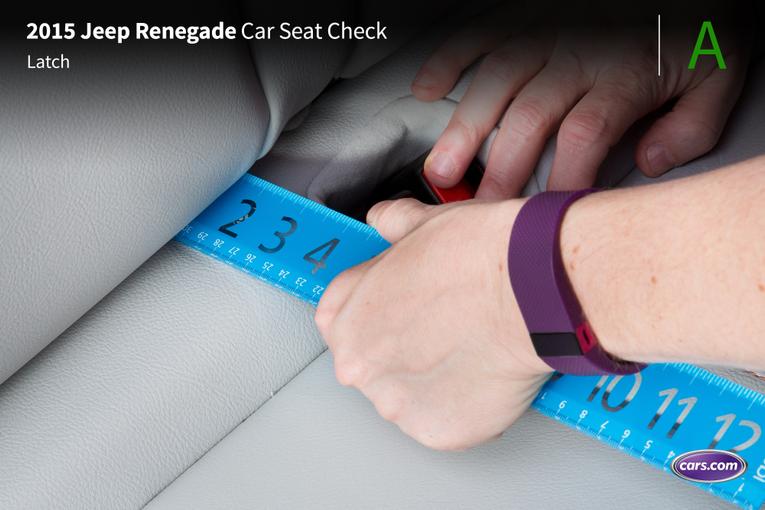
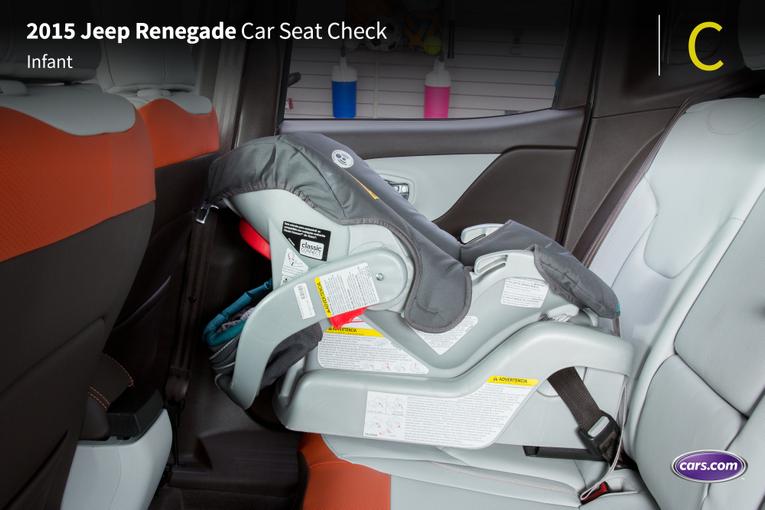
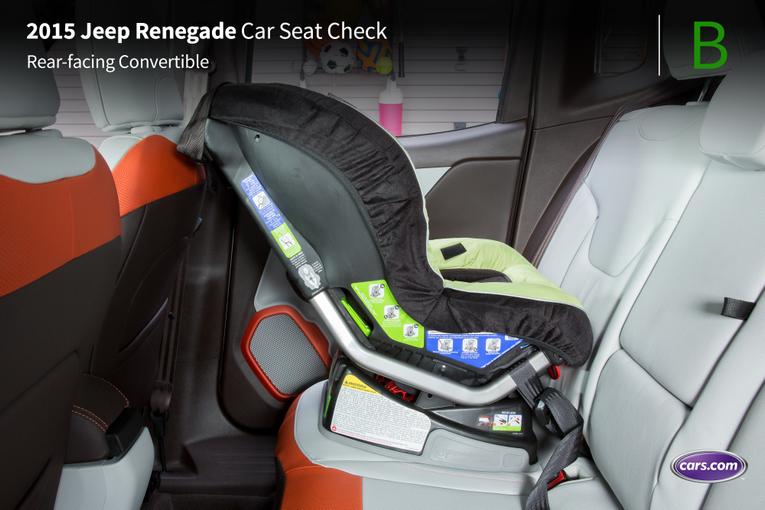
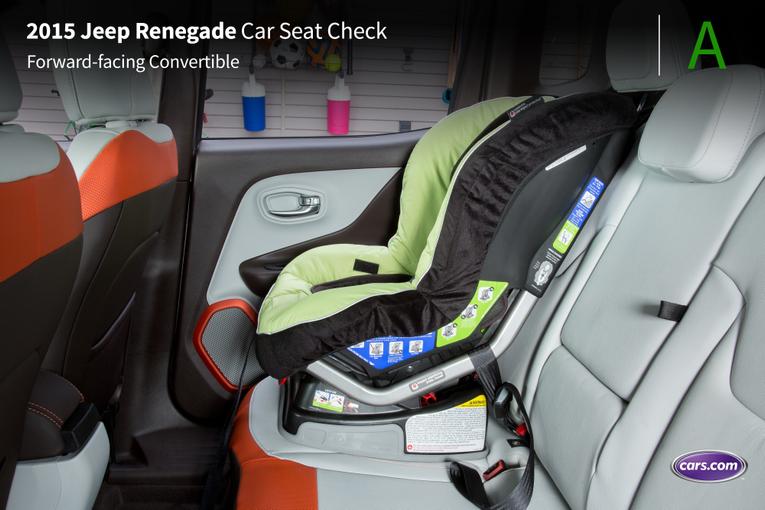
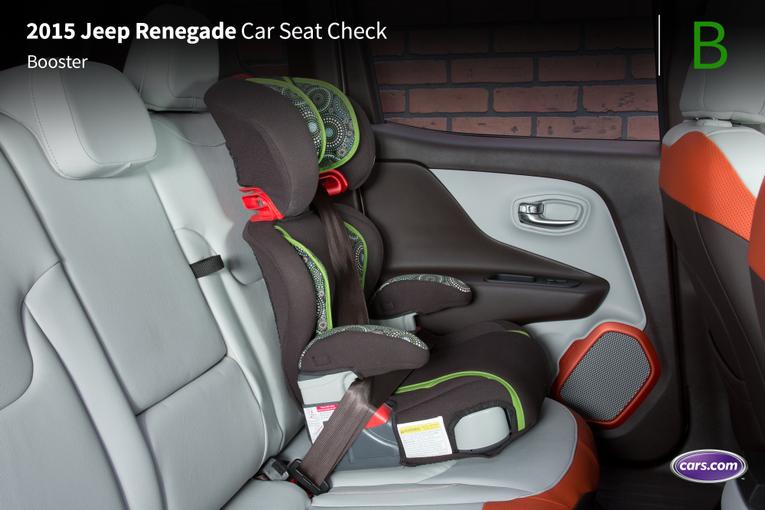
Grading Scale
A: Plenty of room for the car seat and the child; doesn't impact driver or front-passenger legroom. Easy to find and connect to Latch and tether anchors. No fit issues involving head restraint or seat contouring. Easy access to the third row.
B: Plenty of room. One fit or connection issue. Some problems accessing third row when available.
C: Marginal room. Two fit or connection issues. Difficult to access third row when available.
D: Insufficient room. Two or more fit or connection issues.
F: Does not fit or is unsafe.
About Cars.com's Car Seat Checks
Editors Jennifer Geiger and Jennifer Newman are certified child safety seat installation technicians.
For the Car Seat Check, we use a Graco SnugRide Classic Connect 30 infant-safety seat, a Britax Marathon convertible seat and Graco TurboBooster seat. The front seats are adjusted for a 6-foot driver and a 5-foot-8 passenger. The three child seats are installed in the second row. The booster seat sits behind the driver's seat, and the infant and convertible seats are installed behind the front passenger seat.
We also install the forward-facing convertible in the second row's middle seat with the booster and infant seat in the outboard seats to see if three car seats will fit; a child sitting in the booster seat must be able to reach the seat belt buckle. If there's a third row, we install the booster seat and a forward-facing convertible. To learn more about how we conduct our Car Seat Checks, go here.
Parents should also remember that they can use the Latch system or a seat belt to install a car seat, and that Latch anchors have a weight limit of 65 pounds, including the weight of the child and the weight of the seat itself.
No comments:
Post a Comment